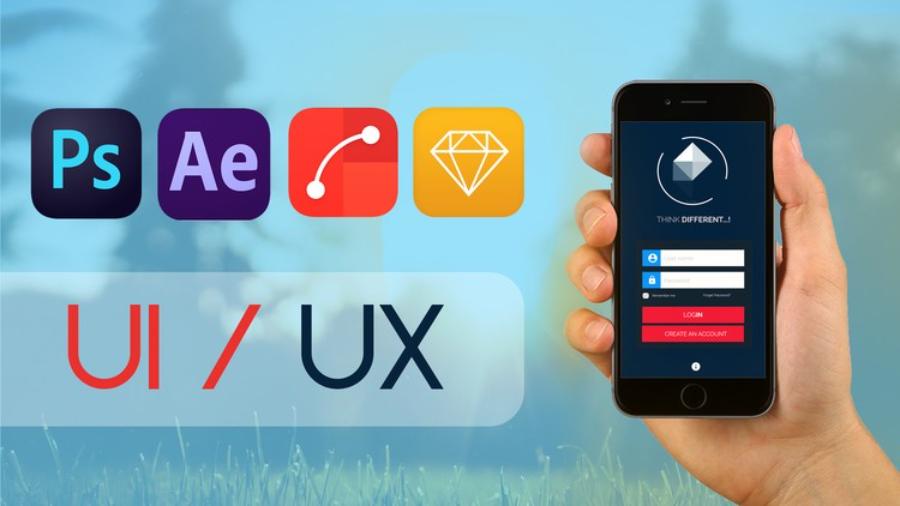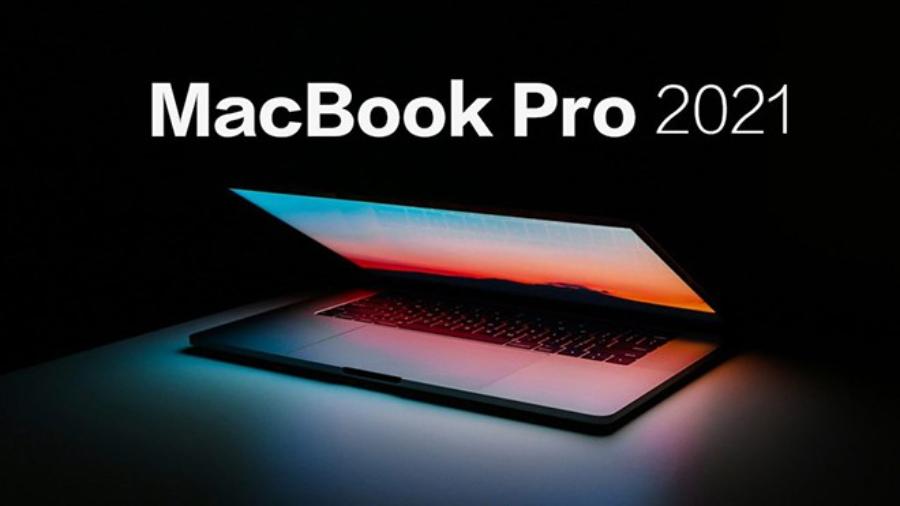Best Selling Products
The Importance of UI/UX Design? How AI & Technology Will Change Interaction Design
Nội dung
- 1. Overview of UI/UX and their importance in design
- 1.1. What is UI/UX design?
- 1.2. The importance of UI/UX in digital product design
- 1.3. Basic principles of UI/UX design
- 1.4. UI/UX and benefits for businesses
- 2. The evolution of UI/UX design in the technology era
- 2.1 . How does technology affect UI/UX design?
- 2.2. The role of technology in optimizing user experience
- 3. AI and technology: Factors changing UI/UX design in the future
- 3.1. AI in UI/UX Design: A New Revolution
- 3.2. Voice interaction and AI in UI/UX
- 3.3. AR/VR Technology: The Future of UI/UX Design
- 4. Future trends in UI/UX design
- 4.1. Personalized user experience
- 4.2. Minimalist Design
- 4.3. Improved smart search feature
- 5. Conclusion
Explore new trends in UI/UX design as AI and technology become key factors. Find out how interaction design will change in the future.

In the rapidly developing digital age, UI/UX design is constantly changing and evolving to meet user needs. AI (Artificial Intelligence) and new technologies are gradually becoming an indispensable part of the design process, changing the way we interact with applications and websites. These technologies not only help improve user experience but also open up new directions in optimizing interfaces and interactions. In this article, Sadesign will explore with you the future of UI/UX design and the role of AI and technology in changing interaction design.
1. Overview of UI/UX and their importance in design
1.1. What is UI/UX design?
UI (User Interface) and UX (User Experience) are two basic but extremely important concepts in the process of designing digital products such as websites, mobile applications, software or other online services. However, not everyone clearly understands the difference between these two factors and their importance to the product design process.
.jpg)
Genuine Claude Al Pro Account
UI (User Interface) : This is the user interface, the part that users directly interact with when using a digital product. UI includes elements such as colors, fonts, icons, layouts, and other visual design elements that users see and use when interacting with an application or website. A good UI is not only beautiful but also easy to use, making it easy for users to find and interact with product features.
UX (User Experience) : This is the user experience, including the feeling, satisfaction and efficiency that users get when using the product. UX is not only related to the interface but also includes factors such as page loading speed, smoothness in operations, ease and comfort of use. UX aims to optimize user satisfaction, from the time they start using the product until the end of their journey.
UI/UX are two inseparable elements in design, because a beautiful interface without a good user experience will not have long-term value, and vice versa, a great experience with a poorly intuitive interface cannot make a strong impression on users.
1.2. The importance of UI/UX in digital product design
Make a strong first impression
One of the most important roles of UI in product design is to create a first impression. When users first come into contact with a website or application, an interface that is beautiful, easy to look at, and easy to use will immediately attract their attention. This helps build trust and curiosity, making users want to explore more about the product. A good UI will be the key to making your product stand out from thousands of other applications or websites.
Improve ease of use and user experience
UX focuses on making a product easy and intuitive to use. When users use a digital product, if they have difficulty navigating or performing basic actions, they will quickly become frustrated and abandon the product. Good UX design helps remove these barriers, creating a seamless and pleasant experience for the user. This not only helps retain users, but also encourages them to come back and recommend the product to others.
Increase conversion rates and user retention
An optimized UI/UX design can significantly increase the conversion rate of a website or app. From making it easy for users to find information to motivating them to take actions like signing up, making a purchase, or using a service, a good UI/UX will directly impact your business results. Websites or apps with beautiful interface designs and smooth experiences tend to have higher user retention rates and motivate them to take actions that benefit the business.
1.3. Basic principles of UI/UX design
Simple and intuitive
Simplicity is one of the most important elements in UI design. Design elements should not be too complex or confusing. The interface should be easy to understand, use, and navigate. It is important to ensure that users can quickly find what they need without having to search too much.
Consistency in design
A successful UI/UX design needs to be consistent across the entire product. From icons, fonts, colors to other interface components, every design element must be arranged logically and consistently. This consistency helps users feel familiar and easily get used to the product.
Instant Response
Another important element of UX is the system’s ability to provide immediate feedback. When a user performs an action, they need to receive immediate feedback to understand what the system is doing. For example, when a user taps a button, the system needs to respond immediately to let the user know that their action has been registered. This helps create a smooth experience and minimizes frustration when using the product.
1.4. UI/UX and benefits for businesses
A product with good UI/UX design not only benefits the user but also brings long-term benefits to the business. Businesses can receive significant benefits from investing in UI/UX design, including:
Increase customer satisfaction : When users have a positive experience with a product, they feel satisfied and tend to return, even recommend the product to friends and relatives.
Reduce customer churn : A poor user experience can cause users to leave early. Good UI/UX design will help retain customers and increase product reuse rates.
Create a competitive advantage : In today's competitive market, owning a product with outstanding UI/UX can be the deciding factor to help you surpass your competitors and gain trust from users.
2. The evolution of UI/UX design in the technology era
UI/UX design is increasingly asserting its important role in building quality technology products, serving the needs of users. In the technology era, the development of UI/UX design not only brings a beautiful interface but also improves user experience, optimizing the interaction process between users and products. Let's explore more deeply the effects of technology on the field of UI/UX design, as well as the important role of technology in optimizing user experience.
.jpg)
2.1 . How does technology affect UI/UX design?
In recent years, the rapid development of technology has had a profound impact on design fields, especially UI/UX design.
First, the development of design tools such as Figma, Sketch, Adobe XD has made it easier for designers to create and optimize user interfaces (UI). These tools not only bring flexibility to the design process but also make testing, editing, and deploying interfaces faster and more efficient. As a result, designers can optimize the interface to best suit the needs and usage habits of users.
Virtual reality (AR) and augmented reality (VR) technologies are starting to make inroads into UI/UX design, opening up new opportunities for creating immersive user experiences. They allow users to interact with products or services in a virtual environment, thereby increasing the intuitiveness and excitement of the usage process.
It is impossible not to mention the strong influence of artificial intelligence (AI) and machine learning in UI/UX design. These technologies help predict user behavior, optimize the interface based on data collected from user interactions. Thanks to that, products are not only beautiful but also convenient, meeting the needs and expectations of users.
2.2. The role of technology in optimizing user experience
In a world where everything is connected and increasingly dependent on technology, optimizing user experience (UX) becomes a key factor in determining the success of any product or service. Especially in the field of UI/UX design, technology not only helps improve the interface but also enhances the user experience through factors such as performance, speed, features, and interaction.
One of the most important roles of technology is its ability to provide personalized experiences. By collecting user data, technology can analyze user habits and behaviors, thereby helping to create appropriate interfaces and features, providing a smoother and more efficient experience. For example, AI-based recommendation systems can suggest products or services that match users' preferences and needs, creating a convenient online shopping experience.
In addition, technology helps optimize the speed and performance of applications, websites and digital products. Improvements in source code, storage systems and data transmission networks reduce page load times and improve response speeds, creating a smooth and uninterrupted user experience. In a world where time is money, speed and performance are considered vital to retain users.
3. AI and technology: Factors changing UI/UX design in the future
3.1. AI in UI/UX Design: A New Revolution
AI (Artificial Intelligence) is gradually taking on an important role in UI/UX design. AI not only helps predict user behavior but also helps optimize interface elements to suit specific user groups. AI tools have the ability to learn from user behavior and habits, thereby automatically creating personalized experiences.
.jpg)
By using AI, designers can automate many tasks, from analyzing user data to designing interfaces. This reduces workload and increases efficiency in the design process, thereby improving the quality of the final product.
3.2. Voice interaction and AI in UI/UX
With the rise of virtual assistants like Siri, Google Assistant, and Alexa, voice interaction has become an integral part of UI/UX design. AI enables devices to recognize and understand the semantics of user speech, helping to create a smoother and easier user experience.
In the future, user interfaces will not only be limited to buttons and touch operations but will expand to voice recognition, gestures, and even user emotions. This will not only make interactions more natural but also create personalized experiences, aiming for maximum convenience for users.
3.3. AR/VR Technology: The Future of UI/UX Design
AR (Augmented Reality) and VR (Virtual Reality) are gradually becoming trends in UI/UX design. AR/VR technology not only creates new experiences but also opens up opportunities to create unique user interfaces, helping users interact with virtual spaces more intuitively.
With AR, users can experience products in real space through mobile devices or AR glasses. Meanwhile, VR creates a completely virtual world where users can interact and experience everything in a completely new way. The combination of this technology with AI will create unprecedented user experiences, providing vivid and intuitive interactive interfaces.
4. Future trends in UI/UX design
.jpg)
4.1. Personalized user experience
AI will continue to play a key role in creating personalized user experiences. AI tools will help analyze user behavior and preferences, providing recommendations and interfaces that are most relevant to each individual user. This will not only optimize the experience but also increase customer engagement and satisfaction.
4.2. Minimalist Design
Minimalism has always been a trend in UI/UX design and will continue to grow in the future. Simple interfaces make it easy for users to access and use the product, while minimizing clutter and distraction. AI will help optimize the interface to ensure ease of use and user-friendliness.
4.3. Improved smart search feature
With the advancement of AI and search technology, search capabilities in applications and websites will become increasingly intelligent. AI will help search systems better understand the context and goals of users, thereby providing more accurate and relevant results. This will help improve user experience, reduce search time, and increase customer satisfaction.
5. Conclusion
The future of UI/UX design is sure to change dramatically thanks to the development of AI and new technologies. AI and technologies such as AR/VR, voice interfaces, and data analytics will open up endless possibilities in optimizing and personalizing user experiences. This will not only change the way we create user interfaces, but also change the way users interact with digital products. With the continuous development of technology, UI/UX design will continue to improve to bring better user experiences. Designers need to grasp the trends and apply technology creatively to not only meet current needs but also predict future trends.












































